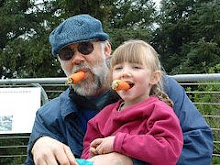These are due to Mark McNeese at ITD by Jan 31, 2008
Local
I'd start with the vision of BicycleCity.com
"Bicycle City is a planned car-free communities project. Our vision is a future with sustainable cities and communities that are eco-, people- and animal-friendly.
We are interested in promoting bicycle- and walkable-friendly cities anywhere in the world and see the importance of the energy, land and ecosystem saving city at this crucial and auspicious time in history."
I continue by saying, energy security is an important goal which can be assisted by reducing the energy used in transportation systems, and at the same time reducing the alienation produced by large scale auto use (road rage, large parking lots, pedestrian unfriendly spaces, neighborhoods where people don't know their neighbors) .
Moscow is working on revising its Comprehensive Plan and we have been discussing the mobility chapter and moving the language away from "streets" to "thoroughfares" with the intention of recognizing multiple and mixed modalities of transportation. So, just as there is a street hierarchy, street, collector, arterial, I am wanting a hierarchy of non-motorized thoroughfares, and that these be given equal priority in the language and organization or the Comp Plan.
My vision extends to the notion that bike paths are used for multiple purposes. They are linear parks and as well as transportation corridors, and need to be treated in both ways by planners -- recognizing that, just as with car travel, we have multiple goals and values in planning a trip: pleasure, exercise, transportation, etc. Consequently, in addition to planning being multi-modal (park & transportation) signage and public understanding needs to meet multi-modal uses.
In addition to routes, destinations need to be part of the planning. Specifically, parking/storage for bikes is needed, and this should not be second-class "chain-to-a-tree" solutions but offer amenities that are incentives to bike use (such as covered bike parking or secured bike storage (both of which are seen in many european cities))
Destination planning needs to occur at all major employment and commercial destinations and at mode-transfer places, such as bus stops and rail stations.
Snow removal needs to be considered in this planning as well. There are days in Moscow when bike/ped activities would be pleasant enough, but due to poor snow/ice maintenance of the routes is too hazardous.
Regional
Many of the comments above I would apply to my regional vision. Inter-city trails need to be seen as multi-modal (ped/bike) and multi-purpose (recreation/transportation)
State
If the visions above are well implemented, the state-wide vision is probably to have uniform and rich information available online about each regions bike/ped systems and how the regions articulate.
